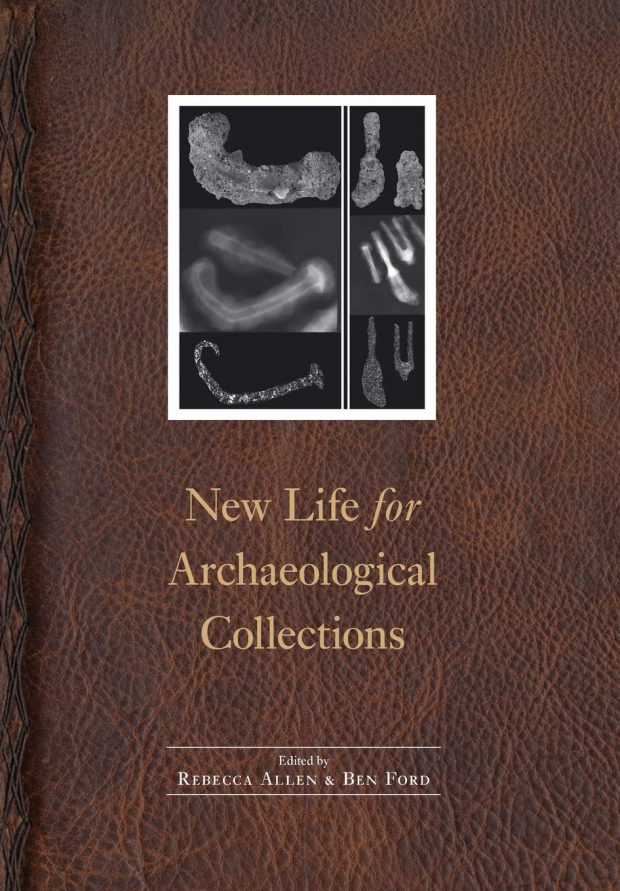New Books for Review
Dear Colleagues, The following books are available for review. If any of them pique your…

September 8, 2021
Submitted by Mary L. Maniery
PAR Environmental Services, Inc., President
SHA Co-Publications Associate
In March 2018, the SHA began a blog for the Society webpage to highlight our collaboration with various presses, including volumes published in collaboration with the University of Nebraska Press, Omaha (UNP). The co-publication program expands our membership’s publication opportunities. UNP is offering SHA members this publication for $48.00 (normally $80.00), an offer valid through December of 2021. Be sure to use discount code 6AF21 when ordering!
If you are interested in contributing a joint UNP-SHA published volume, please contact SHA’s Co-Publications Editor, Benjamin Ford (ben.ford@iup.edu)
ABOUT THE BOOK
New Life for Archaeological Collections (2019)
Rebecca Allen and Ben Ford, editors
Number of pages: 450; 30 figures; 6 maps, 14 tables, index
University of Nebraska Press, Omaha
Society for Historical Archaeology Series in Material Culture Series
New Life for Archaeological Collections explores solutions to what archaeologists are calling the “curation crisis,” that is, too much stuff with too little research, analysis, and public interpretation. This volume demonstrates how archaeologists are taking both large and small steps toward not only solving the dilemma of storage but recognizing the value of these collections through inventorying and cataloging, curation, rehousing, artifact conservation, volunteer and student efforts, and public exhibits.
Essays in this volume highlight new questions and innovative uses for existing archaeological collections. Rebecca Allen and Ben Ford advance ways to make the evaluation and documentation of these collections more accessible to those inside and outside of the scholarly discipline of archaeology. Contributors to New Life for Archaeological Collections introduce readers to their research while opening new perspectives for scientists and students alike to explore the world of archaeology. These essays illuminate new connections between cultural studies and the general availability of archaeological research and information. Drawing from the experience of university professors, government agency professionals, and cultural resource managers, this volume represents a unique commentary on education, research, and the archaeological community.
AUTHORS INTERVIEW
MM: What are some of your motivations for writing/spearheading this book?
RA/BF: We organized New Life for Archaeological Collections in recognition of the increased amount of historical archaeological work being done with legacy collections, and collections that lack accompanying reports. This is important work because it fulfills our ethical obligations to preserve and steward the archaeological record. Studying or restudying a collection is preservation in that the study is not disturbing an archaeological site, leaving that site for future archaeologists with different questions and better methods. It is stewarding in the sense that we are wringing as much information as possible from archaeological resources and contributing to the knowledge of a site and respective descendant communities. As archaeologists curate collections for future research, engaging with these collections fulfills the promise of archaeological knowledge, and teaches archaeologists to become better at how they research, excavate, engage with the community, and curate in the future.
MM: Who would you like to read this book? Who is your audience?
RA/BF: New Life for Archaeological Collections is for any archaeologist with an open mind about using collections. For students or those who have not thought of using an existing collection for their research, this book provides many good examples of research questions and approaches that have been fruitful, as well as warnings of the possible pitfalls and frustrations. For archaeologists already using existing collections in their research, there are several examples that will help inform their practice. There is plenty of room for growth in collections-based research. This book doesn’t claim to be the final word on using existing and legacy collections, but we hope that it is a conversation starter.
MM: Now that you have published this book, what kinds of things are you dreaming up next? What is in the works?
RA/BF: Hopefully we will work together on a future project. We had a lot of fun doing this book and found that bringing our different perspectives, experiences, and networks to bear on this topic made for a stronger book. In the meantime, Rebecca is working with descendant Native American communities who may not want to curate artifact collections, but do want to leave cultural knowledge, data, images, and oral histories for future studies and future generations. Ben just published an underwater archaeology textbook with Jessi Halligan and Alexis Catsambis – Our Blue Planet (Oxford University Press). His next project is to pull together the Hanna’s Town legacy collection and use the lessons learned from New Life for Archaeological Collection to really make it sing.